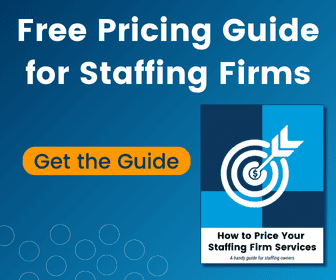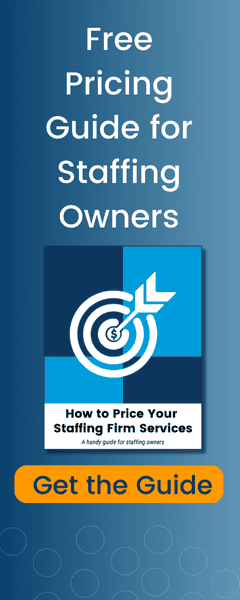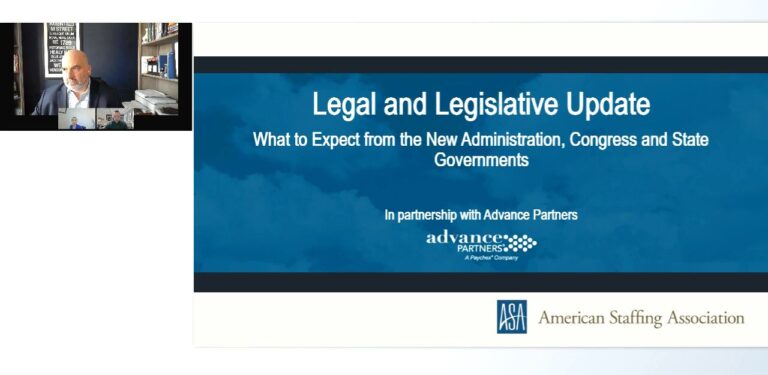How Does a Staffing Agency Get Paid?

Last time updated: October 23, 2025

How Staffing Agency Payments Work – From Client Billing to Payroll Obligations
If you’re new to the staffing industry or considering starting your own staffing firm, one of the first questions you might ask is: How does a staffing agency get paid? It’s a great question – and understanding the payment process is critical for managing cash flow and growing a sustainable business.
In this post, we’ll break down how staffing agency payments work, from client billing to payroll obligations, and how to keep your staffing firm cash flow strong while navigating the time gap between paying employees and getting paid by clients.
Why Understanding Payment Models Matters for Staffing Firms
Understanding how staffing agencies make money—and the various billing processes involved—is crucial for both new and established staffing firm owners. Here’s why:
- Helps new owners avoid underpricing and cash flow traps: Knowing how revenue is earned (and the timing) ensures you set the right markups and don’t get caught short on payroll.
- Builds credibility with clients by explaining fee structures clearly: Transparency about your pricing models helps establish trust, and makes it easier to negotiate fees or defend your value.
- Essential for planning growth and scaling operations: A clear grasp of billing timelines and profit margins allows you to confidently staff up, take on bigger clients, and set a sustainable growth trajectory.
Whether you’re launching your staffing agency or revisiting your business plan, understanding how the money flows sets the foundation for long-term success.
Types of Staffing Agency Revenue Models
A staffing agency makes money by providing temporary, contract, or permanent workers to client companies and charging a fee for that service. There are a few primary ways staffing agencies get paid:
Direct Hire or Permanent Placement Hiring
For direct placements, the client pays a one-time fee—usually a percentage of the candidate’s first-year salary—once a successful hire is made.
Example:
- Total billed: $16,000
- Candidate salary: $80,000
- Placement fee: 20%
Temporary or Contract Staffing (Hourly Bill Rate)
In this model, the staffing agency pays the worker an hourly wage and bills the client a higher hourly rate. The difference—called the gross margin—covers the agency’s payroll taxes, overhead, and profit.
Example:
- Gross margin: $10/hour
- Worker is paid: $20/hour
- Client is billed: $30/hour
Retained Search
Typically used for executive and highly specialized roles, clients pay some or all of the fee upfront or in predefined milestones (e.g., retainer at launch, then payment at shortlist stage, then final payment upon placement)
Temp-to-Perm Conversions
When an employee you placed as a temp transitions to the client’s full-time staff, agencies earn a “conversion fee.” This helps monetize successful placements even after the contract period.
Project Staffing / SOW (Statement of Work)
Especially in IT, healthcare, and engineering, clients pay a set price (flat fee or milestone) for a project or defined deliverable, rather than hourly work.
When Does a Staffing Agency Get Paid?
Here’s where things get more complex. In the contract staffing model, clients are typically invoiced weekly or biweekly after the worker submits and approves a timesheet. However, payment from clients can take 30, 45, or even 60+ days, depending on the agreed-upon terms. That means the agency is often paying employees weekly—before the client has paid their invoice. This creates a serious cash flow gap that many new agencies underestimate.
Common Billing Terms and Negotiation Tips
Staffing agencies and their clients agree on payment terms in their contracts, which can significantly impact cash flow and business operations. Here’s what you need to know:
- Typical Terms: Many agencies start with Net-30 (client required to pay within 30 days of invoice date), but larger or enterprise clients might insist on Net-45 or even Net-60 terms, creating longer waits for payment.
- Early-Pay Discounts: To encourage prompt payment, some staffing firms offer a small discount if the client pays early. For example, “2% 10, Net 30” means the client gets a 2% discount if they pay within 10 days, otherwise full payment is due in 30 days.
- Clear Contracts: Make sure your billing schedules, late fees, and payment terms are spelled out in your contract. This reduces ambiguity, speeds up collections, and can prevent disputes down the road.
- Negotiation: Don’t be afraid to negotiate. If fast payment is important to your business, make it part of the discussion upfront—especially with new or high-volume clients.
Being proactive with your billing terms gives you more control over your payment cycle and protects your cash flow as your staffing firm grows.
Staffing Firm Cash Flow: The Real Challenge
A healthy staffing agency cash flow is all about timing. You have to front the money for payroll,
taxes, and overhead while waiting to get paid by your clients. This cycle can cause strain, especially if your business is growing fast. That’s why many successful staffing firms turn to solutions like payroll funding or invoice factoring to smooth out their cash flow. These services allow you to get paid faster—often within 24 to 48 hours of submitting an invoice—so you can keep up with payroll and reinvest in growth.
How Staffing Agencies Manage Cash Flow Challenge
Maintaining positive cash flow is one of the top hurdles staffing firms face—and missteps here can halt your growth. Here’s how successful agencies stay on top:
- Utilize Invoice Factoring or Payroll Funding: Short-term financing options like payroll funding allow you to access cash as soon as you bill your client, so you can reliably meet payroll and operating expenses even if the client takes weeks to pay.
- Diversify Your Client Base: Relying heavily on a single, slow-paying client puts you at risk. Maintain a mix of clients with staggered payment cycles to keep revenue steady.
- Monitor Gross Margin: With variable pay rates, markups, and taxes, it’s crucial to closely track your gross margin on every placement to ensure you’re profitable after covering all costs.
- Stay on Top of Receivables: Regularly follow up on late payments, and consider automated invoicing tools or back office support to keep your collections process running smoothly.
By actively managing these elements, staffing agencies can weather cash flow ups and downs—and focus on growth, not just survival.
How Advance Partners Helps Staffing Agencies Get Paid
At Advance Partners, we specialize in helping staffing agencies manage their cash flow with flexible funding and back-office support. Here’s how we do it:
- Payroll Funding: We advance you the funds to cover payroll as soon as you invoice your client—no more waiting 30+ days.
- Invoice Management: We handle your invoicing and collections, so you can focus on recruiting and running your business.
- Back-Office Support: Our team helps you stay compliant, pay your people, and scale smoothly.
We understand the unique payment cycle challenges that come with running a staffing agency, and we’re built to support your growth every step of the way.
Real-World Example: The Payment Gap in Action
Let’s put the payment process in perspective with a simple example:
- Payroll Due: Imagine a staffing agency pays 25 temporary workers $20/hour for a 40-hour week. That’s a weekly payroll obligation of $20 x 40 x 25 = $20,000 due each Friday.
- Client Invoice Issued: The agency sends the client an invoice for those workers’ total hours at an agreed-upon bill rate—let’s say $40,000 for the week—on Friday.
- Payment Terms: But the client’s contract is Net-45, meaning payment will arrive roughly six weeks after the invoice is sent.
- Cash Flow Gap: Over those six weeks, the agency must continue to advance payroll: 6 weeks x $20,000 = $120,000 out-of-pocket before seeing payment for just one client project!
Without reliable payroll funding or a large cash reserve, covering these payrolls is a major challenge—and why understanding the payment model, billing terms, and funding options is key for staffing agencies at any stage.
Final Thoughts: Getting Paid Isn’t Always Fast—But It Can Be
So, how does a staffing agency get paid? The short answer: after they’ve done the work and
invoiced the client. But the longer answer involves careful cash flow planning, smart funding
solutions, and a strong back-office foundation.
Whether you’re just starting out or ready to take on larger clients, understanding your payment
cycle – and how to manage it – is key to long-term success.
FAQs: How Staffing Agencies Get Paid
How does a staffing agency typically get paid?
Most agencies bill clients after submitting worker timesheets. Payment timing depends on contract terms—often Net-30 to Net-60 from invoice date.
How long does it take for a staffing agency to get paid?
It can take 30, 45, or 60+ days, depending on your contract with the client. Direct hire fees are typically paid soon after placement; contract staffing payments are slower.
What is the profit margin for staffing agencies?
Margins vary by industry and role, but gross margins (bill rate minus pay rate and taxes) often range from 15% to 25%.
What funding options help staffing agencies cover payroll?
Payroll funding and invoice factoring are popular options that advance you the cash you need each week, so you aren’t waiting on slow client payments.
Do staffing agencies pay their workers before clients pay them?
Yes—agencies are legally responsible for paying employees on their usual pay schedule, even if the client hasn’t paid the agency invoice yet.
Up Next














